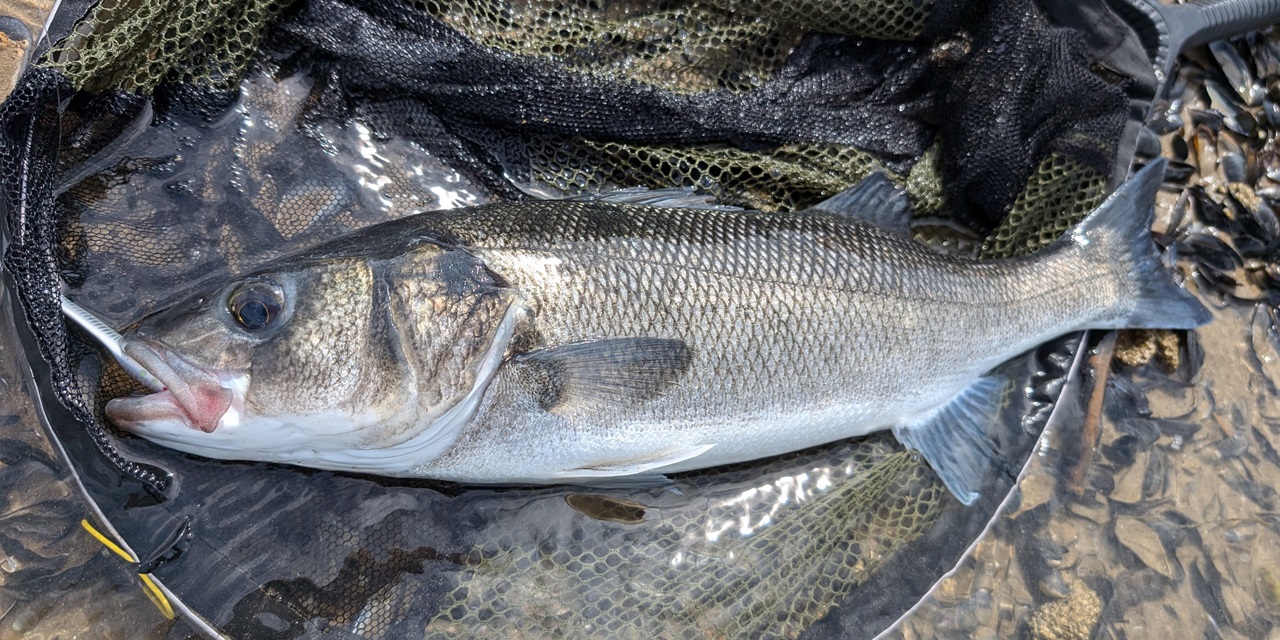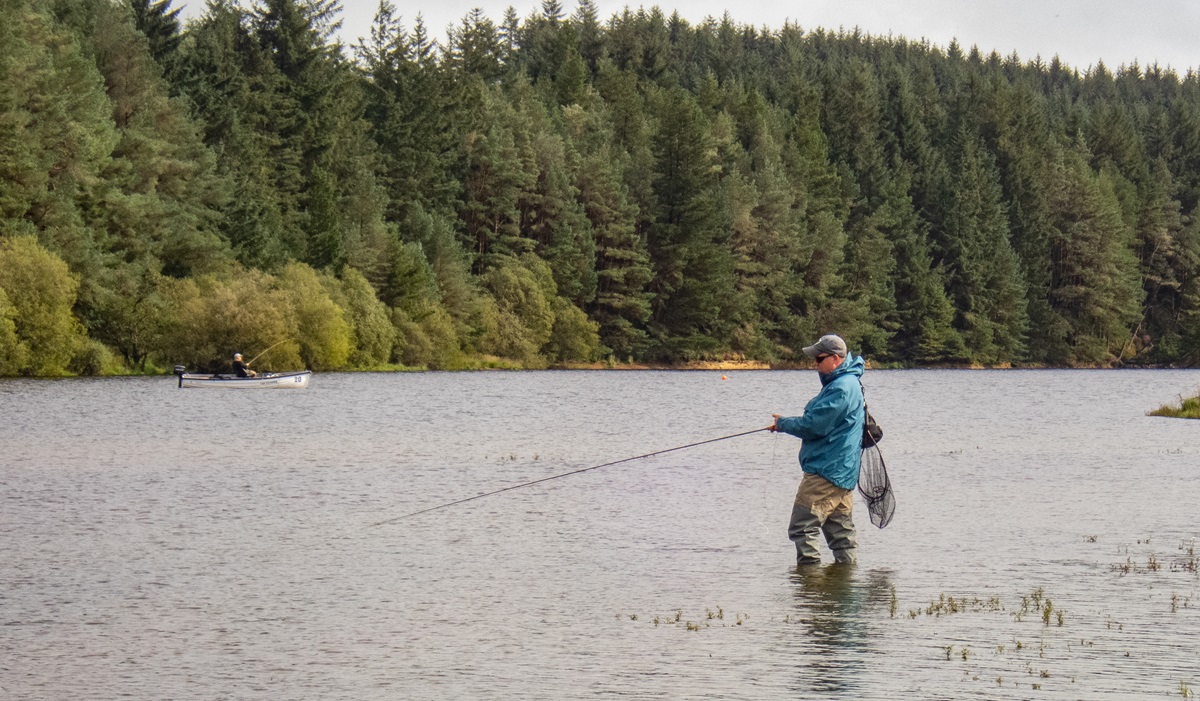Sport Fishing for Bass in West Wales
In this article Alan Parfitt writes about Sport Fishing for Bass in West Wales, including tactics and methods required to catch them.
A few days ago I was chatting to “Sewin” expert Alun Rees and we readily agreed as to how lucky we are to live in South East Wales. We believe it really is God’s country.
Within an hour’s journey we have access to three of the most famous angling rivers in the UK. The Wye, Usk and Towy are three wonderful rivers which each can offer a different fishing experience. The Wye for its Salmon, Trout and fabulous coarse fishing. The Usk for quality wild brown trout and Salmon while the Towy is the principality’s major large Sewin (sea trout) river.
You can simply ask yourself in the morning “for what and where shall I fish today”.
Let us not forget though that South Wales is a great for a fourth sport fish, which is becoming of increasing interest to game fishermen in Wales. I am of course talking about the Sea Bass (Welsh Draenog y Mor – sea hedgehog) found all around the Welsh coast.
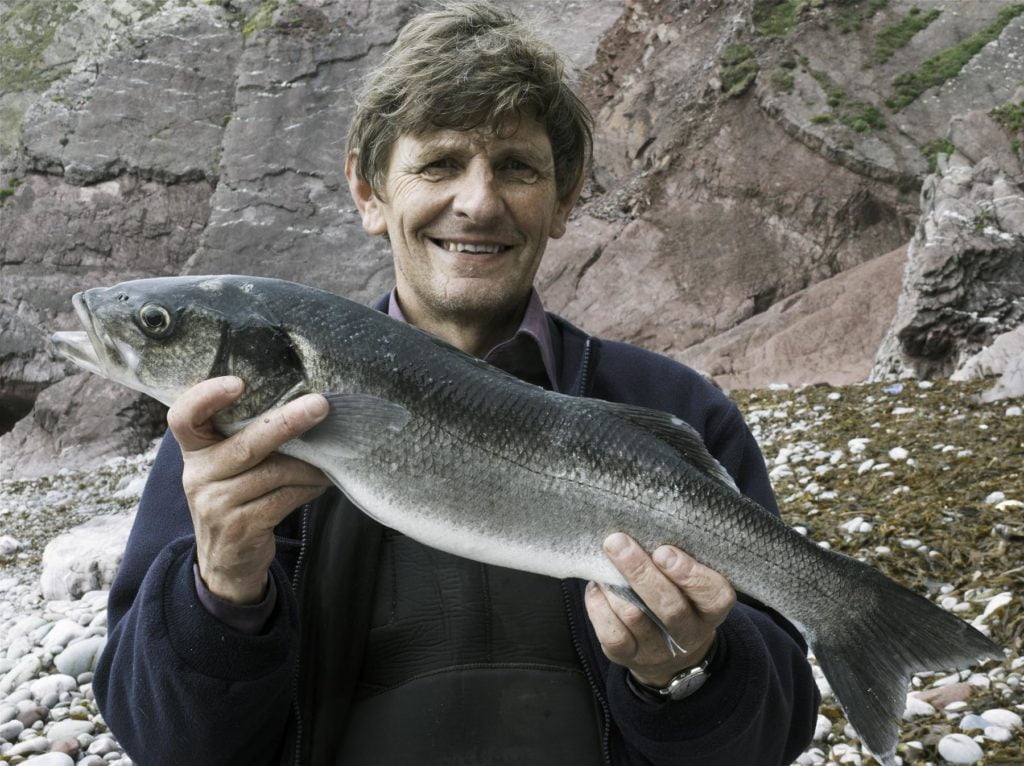
I live in South East Wales and even here in the mud filled tidal waters of the Severn estuary there is some good bass fishing. Newport and Barry docks produce monsters while all along the industrial coastline Bass are a frequent catch.
The Gower is of course known far and wide but for most of my fishing life I have made the quick and easy journey down the M4 motorway to Pembrokeshire on a regular basis. The fishing is probably better and the season longer, but above all it is the fabulous scenery and variety of this world class coastline that keeps me faithful.
There is more to fishing than fish. What I want above all is a good day out and in this article, I am going to look at Sport fishing for this supreme salt-water fish – Welsh bass.
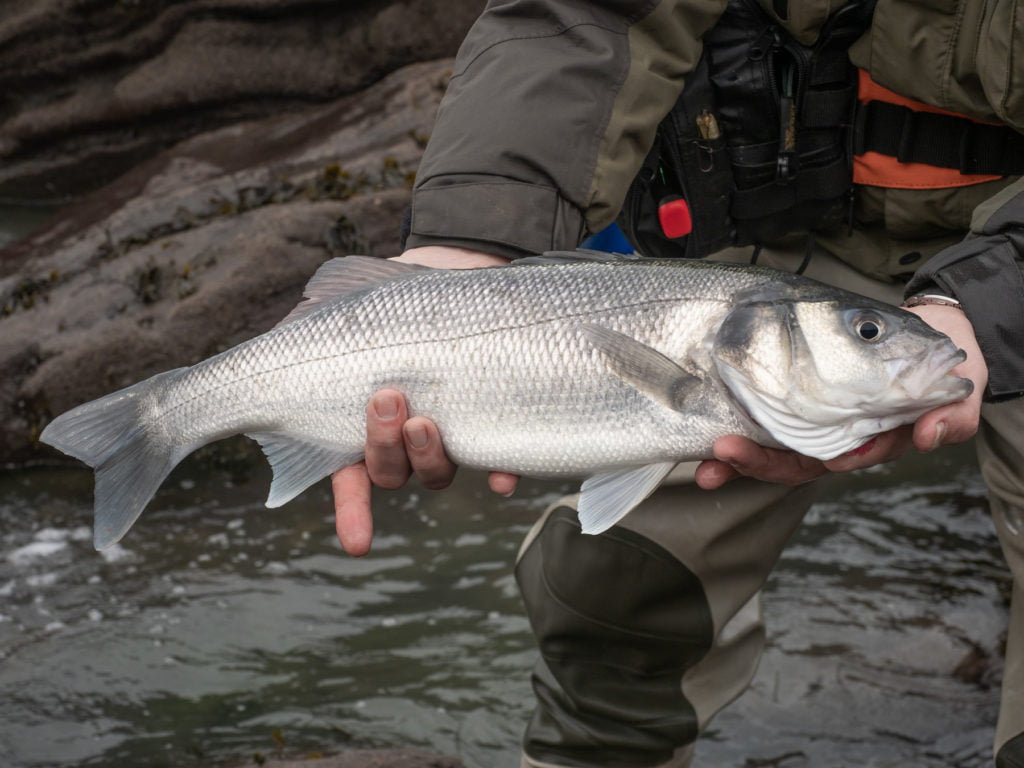
I shall deal with three ‘sport fishing’ methods which are fly-fishing, spinning and surf casting. But firstly, some basic tips and tactics which apply to all three techniques.
Rule no 1 – Find your Bass
It might seem easy but in fact this is often the most difficult task. It may appear obvious, but you cannot catch a fish which is not there! I don’t know how many times this rather obvious statement has been made, but the number of anglers who simply find a spot and fish it hour after hour in the blind faith amaze me.
I would love a £1 coin for every time I have watched optimistic anglers whether on rivers or the sea spin for hours on end like a factory production machine with no sign of a fish to show for their efforts. If you do not have any luck move on. I bet that most if not all successful bass anglers have a second or third venue up their sleeve close by should one location prove barren.
One or two locations I fish because of tides or distance prevent a change of venue, so I am always very tentative about fishing them. It can reduce catching to luck. This is one reason why reliable bass marks are such closely guarded secrets.
We are talking “sport fishing” so it is a roving game and the successful angler
is always on the move. All the successful Bass anglers I know are prepared to
wander. So, an extension to rule no1 is get fit. There are of course
exceptions. Bass can suddenly appear from nowhere, so if you wait long enough
then an odd fish will probably pass by. This usually corresponds to a specific
state of the tide – but why wait all day? Fish the mark when the fish are there
and try somewhere else when they are not.
You will learn from experience together with a little bit of luck. Try enough spots and you will succeed. It has taken several decades to build up my still limited knowledge of good Bass marks but the effort has been worth it and the information treasured.
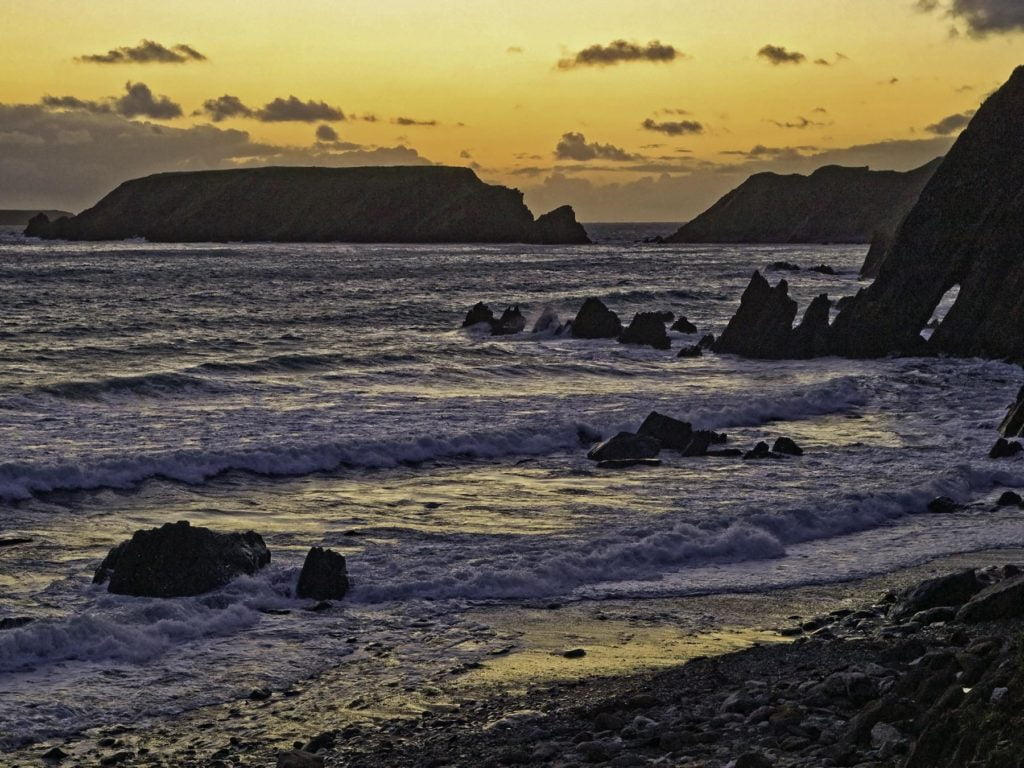
If you do catch Bass at a particular mark then don’t just remember its location is but the state of tide, time of day, and size of tide. Come back two weeks later when the tide is near the same and you may well do well again. A piece of advice frequently given in the angling press is to ask the locals where to fish. Do so by all means but remember that if it’s a known mark then it will be heavily fished. Bass are quite localised in their summer habits and a mark can be fished out quickly. Far better is to find your own.
Rule no 2 – Learn to read the Water
This compliments rule no 1. The ocean is huge, and many newcomers are overwhelmed when faced with the prospect of casting out into its enormity. Trust me when I state that if the physical conditions are correct then the Bass will be there at some stage.
I expect we have all seen plenty of articles in the magazines with pictures of typical bass ground and they can help. Trying to describe good Bass ground is almost impossible in writing. Eventually you will almost instinctively recognise good Bass territory and be able to fish it with a high degree of confidence even though you may never have fished it before. Again there is no substitute for time and effort.
To get you started the best thing I can suggest is get yourself on Google maps (or the Free OS Survey Map App) and look for sandy bays with rocky headlands or areas of rough ground near clean sand. Bass love sandy coves but you don’t always fish over the sand when “sport fishing”. Look for rocky or boulder strewn ground which runs at the edges of the bay and parallels the direction of the tide along the beach from low to high water.
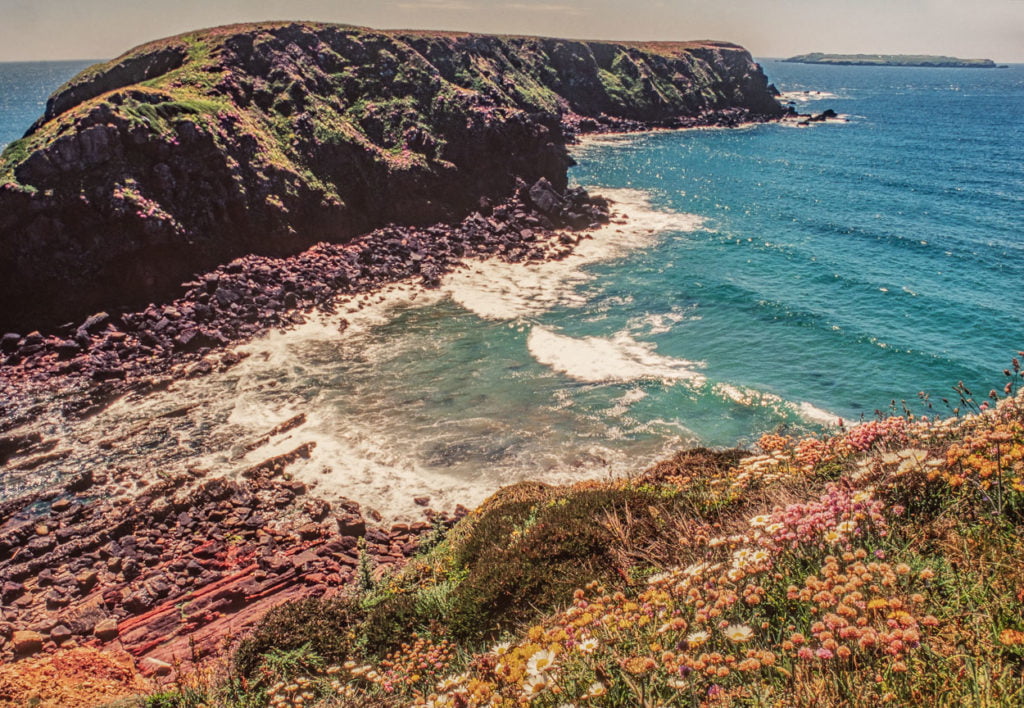
The Bass will move up the tide searching along the edge of the rocks. Small coves are often attractive to Bass in high summer especially at high water because small fry seem to get trapped in the coves. Look for headlands on the map especially if it looks as though there might be a good tide race around it. Remember though you do not need deep-water.
It is worth mentioning at this point that you need clear water for both spinning and fly-fishing. I will not say you cannot catch Bass in dirty water, but they are often feeding by sight and I personally lose confidence if the water is turbid. Fortunately, in West Wales the water only becomes coloured for short periods and during the Bass season is usually crystal clear. Just what we want.
Rule No 3 – Break the Rules
This sounds a contradiction but what I really mean is don’t slavishly follow all the published advice and rules you can read about Bass fishing. Be prepared to break them or be wary of some claims, which are many and varied.
Many “rules” have simply been perpetuated from one book or magazine to another and in fact may be incorrect or misleading. If you feel something might work try it. If it does do it again.
Many of the modern methods I will talk about have only been discovered by a few pioneers particularly within BASS who have the confidence and desire to experiment.
Spinning for bass
When spinning for Welsh bass I like to use longer rods. 10ft at the shortest with 11ft much more useful. At 12 ft they can become tiring. Despite preferences and some claims that short rods are better there are good practical advantages of longer rods.
The sea is dangerous.
Never forget this. A long rod allows you to stand much further back or at a higher level from the water. Often you need to hold the rod tip almost, or sometimes in, the water to prevent the lure rising too high and this can only be done at all or in safety with a long rod.
A long rod has a big advantage when bringing your lure over close in obstructions common in the areas we fish. If there is a large swell coming straight at you go elsewhere or think about going home. There will always be an extra large wave every so often.
Bass will take almost any lure when they are in the mood. Any tried and tested lure will work. I have caught them on Spoons, spinners, plugs, spinner baits and soft plastic lures.
These days I mostly use Toby spoons and plugs. This is not because they are always the best but because I like to use them. Toby spoons in 20gm. size cast well and are tremendous fish attractors. They do have a reputation as poor hookers and this is certainly true with Salmon and Sewin though it seems less of a problem with Bass.
Plugs are always my no1 choice. Plugs give you more options than spoons. Floating plugs can be fish in the shallowest of water and the speed of retrieve changed at will.
In theory you should hardly ever lose a floating plug which is important considering their cost. In practice you will lose a few in your first season but with experience the loss of plugs gets less and less as you become more accustomed to their use. I rarely use sinking plugs because the Bass are usually in shallow water less the 10ft and often 2 to 3ft.
Excellent plugs are the Rapala j11 and j13 jointed floaters, as are the Bomber and Rebel equivalents but newer patterns like the longcast minnow and Xrap cast better. I am not alone in rating the original Rapala as one of the best plugs of the lot but they are awful to cast any distance. There is a whole new generation of Japanese plugs available so read the pages of BASS for feedback. The main problem with lightweight plugs is the difficulty in casting them in windy conditions.
The most fun plugging for Bass without doubt is using surface popping plugs. This technique developing by pioneers in the Bass Sport Fishing Society has received quite a bit of publicity in the last year or so. If you have never tried it you are really missing out.
It is an act of faith to use them for the first time and believe that a bass will come to the surface and engulf something that resembles a floating cigar tube. Once you see it happen it becomes very difficult to fish for them in any other way.
The most well known surface-popping plug is the “Chug Bug” though the Rapala “skitterpop” is very good as is the “Aile-Magnet”. Put simply you cast the plug and retrieve it in short sharp jerks with a pause between. Fish will often take the static lure. You will see the fish take the lure, which makes it so exiting. One thing I have noticed and would appreciate comments off other users of surface plugs concerns the manner by which the bass sometimes take a surface lure.
Fly-Fishing for bass
The great advantage of spinning is the area of water you cover. The plug or spoon will cast further and in more difficult conditions such as strong wind and rough seas. Another enormous advantage of spinning is that it helps you to discover the hop spots to try with a fly.
Despite this my preferred method to catch Bass must be with the fly rod. I don’t really know why. I just do. It’s not an affectation. I fish for pleasure, very rarely kill a Bass so I fish in the style I enjoy the most and gives me the greatest satisfaction.
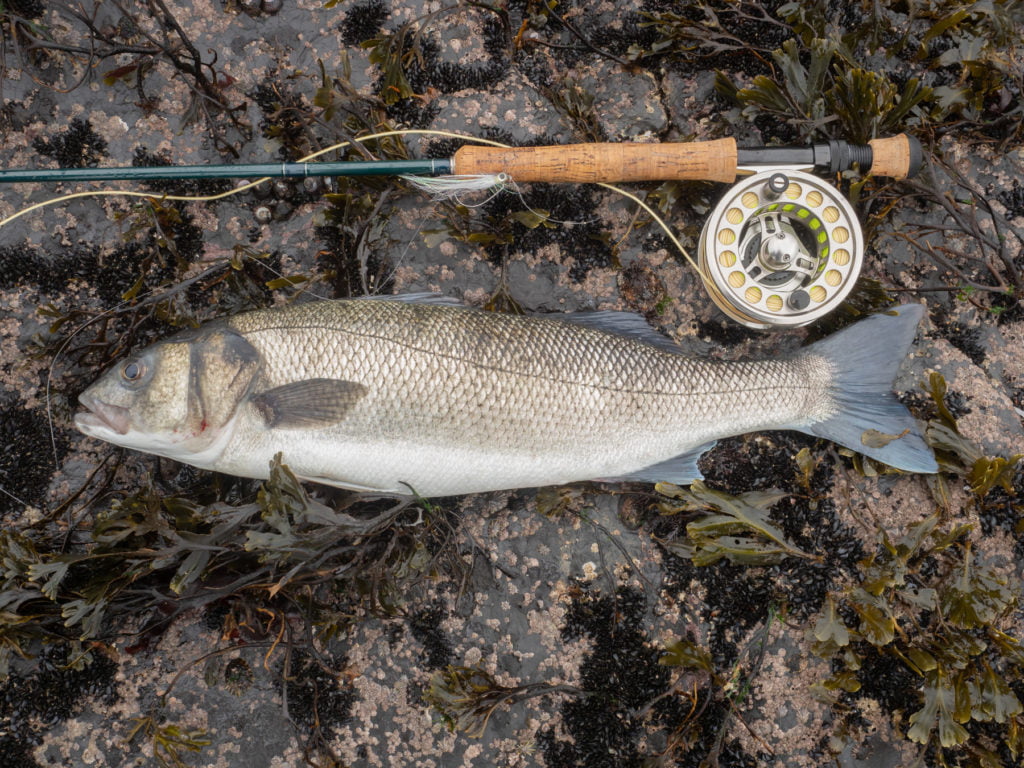
Fly-fishing for Bass like plugging is receiving more and more exposure in the press but we must be realistic about it. It is so easy to write about it but it can be a lot more difficult than it appears in print.
On the West Coast of Wales facing thousands of miles of open Ocean, conditions do not often allow practical fly fishing.
I suppose we could battle wind and wave but what we want is a good day out and if conditions suggest that plugging is an easier option then plugging it is. In other words fly-fishing for Bass is great fun but be practical and try it when conditions allow.
This philosophy means that on every Bass-fishing trip when we are not specifically surf fishing I take both the spinning and fly rod. To be perfectly honest on most occasions we are unable to use the fly rod. This may be due to strong wind but the most frequent cause is surf and weed.
The best Bass locations we fish are over rocky and shallow water and by late spring the prolific weed growth can lead to the water’s edge becoming choked with weed fragments, which completely tangle up your line.
I am thinking of experimenting with a double-handed Salmon rod to both make casting less tiresome and to enable the rod tip to reach out over the weed blanket.
Another difficulty in West Wales is that there is often little back casting room when fishing off some rock marks when the cliffs are close behind you. As a Salmon fisherman I am can manage to Spey cast but even this is not practical unless you are in the water. I suspect that some UK authors who write about fly-fishing in the salt have either never actually tried it fully for themselves in earnest or only fish in the tropics with wide-open estuaries and beaches.
I am not trying to put the reader off trying to fly-fish but just to make sure that you realise it is not as straightforward as it may appear if you try to fly-fish the open coast.
Having said all that when you do get it right the reward is fantastic. The best I have managed is around 100 fish in a session (ok it seemed to be that many) They were only school Bass but what fun.
The choice of flies is enormous and there are now a few British websites dedicated to saltwater fly fishing. Clouser minnows are excellent, as are surf candies. Sometimes Bass can become preoccupied with small shrimps and you need to imitate these. Surface poppers in the form of flies work just as well their plug cousins, and for visual reasons it is my favourite method.
You only need a floating or intermediate line for most purposes. On calm days you can get by with a reservoir type rod but my standard rod is an 8# to 9#. moving up to a 10-weight in severe conditions.
Bass seem to respond better to continuous steady retrieve rather than the usual strip and pause. To achieve the steady retrieve place the rod under your arm and pull the line hand over hand (roly-poly).
There are lots of features on the web about fly-fishing for Bass in the US. Read them but don’t believe what they say will automatically work in the UK.
Big flies are fine but difficult to cast. British Bass have no hesitation eating more modest mouthfuls. Do not worry about casting too far. Sometimes it helps if you are a good caster but often the Bass are closer than you imagine. A favoured tactic with both fly and plug is walk the water’s edge at high water on a beach on which the sand gives way to a steep embankment of shingle/ pebble at high water. The bass seem to patrol the junction of the two and it is only a short cast to reach them.
I once picked a nice fish by accident in such a situation. My fly line had entangled in weed and with my fly resting a few feet out in the water I cleared the line. As I did 3lb Bass picked up the static fly.
Finally, try the best of both worlds if you get desperate. Put up your spinning rod, tie on a popper and a couple of feet above it a nice juicy Bass fly. It is the fly, which often takes the fish especially when the water is calm and clear.
Surf fishing for bass
I don’t surf fish much these days so when I do it is all the more enjoyable. To cast a line into the breakers at sunset on the wild dramatic Pembrokeshire coastline is an experience not to be missed. Mike Oliver’s talk at the Bass AGM has renewed my enthusiasm so perhaps I will give more attention this year.
Nearly all my surf-casting is done in the Autumn when the storms have whipped up the surf and made it too rough and sometimes dirty for both spinning and the fly.
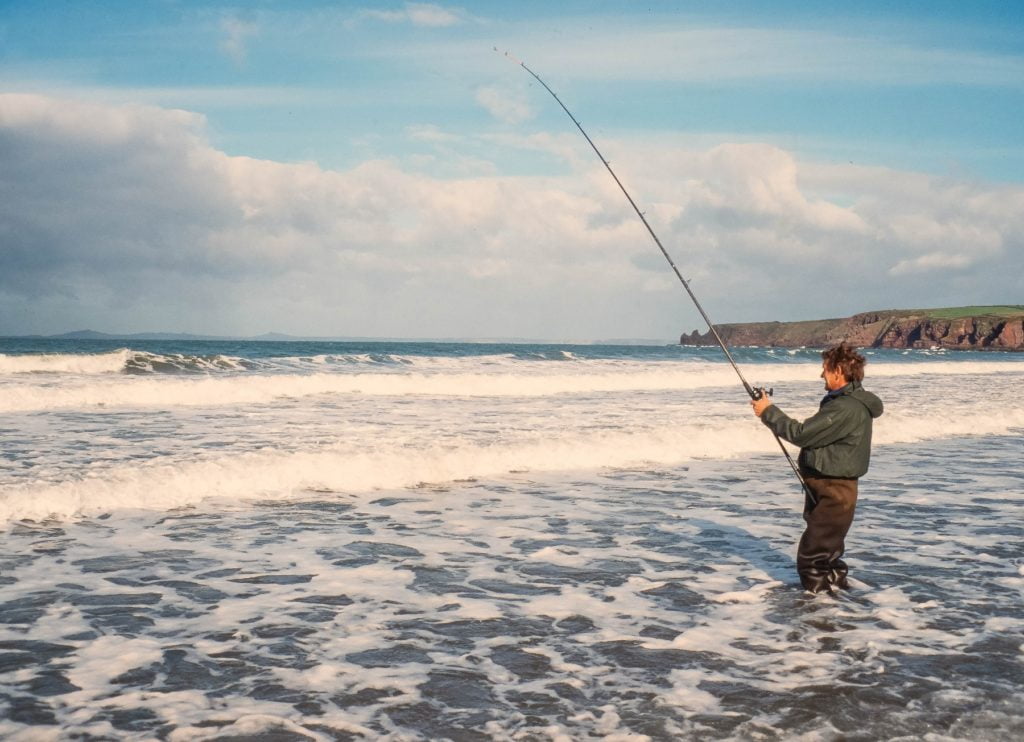
Casting a 4-6oz weight to the horizon at low water, putting the rod in a rod rest and waiting for a bite is not for me. I do not class this as sport fishing. How can surf fishing become sport fishing?
The answer lies in the way you fish. Leave the 4-6oz rod at home. The 2-4oz bass rods sold for the purpose are fine though I much prefer a 1-3oz. This rod is far more fun to use and since you ALWAYS hold the rod it is far more pleasant.
A 2-3oz lead fished correctly will handle most conditions and since you often do not want to anchor the lead in the seabed wire grips are optional.
The idea is to cast your lead and bait a moderate distance in the surf and let the sea move you end-rig around. I hammer my surf leads with a lump hammer so they have flat sides. They can still move but it gives you a little more control.
You are in practice letting the bait move and find the fish rather than the other way around.
The surf will move the lead and bait and will soon find the gullies and other features where Bass may be lurking but more importantly you are covering lots of ground with you bait.
In very heavy surf this technique is not always possible but is the method to use whenever I can. This method requires you to keep in touch with your bait at all times and follow the weight as it moves. Again it’s a roving game.
If you think this is not sport fishing wade up to you delicate parts or deeper depending on your confidence in good surf and experience the buffeting you will get.
Night fishing in the surf gives better results than daylight, particularly in West Wales where the water can be crystal clear. Use whatever bait you wish. Rag and lugworm are deadly while squid and Sand eel are successful and easier to obtain.
That’s about it. There are lots of other things I could say and in fact having read what I have written makes me realise I have told you hardly anything. Still it’s done now and since the purpose of this article is just to give you an overview it can stay at it is.
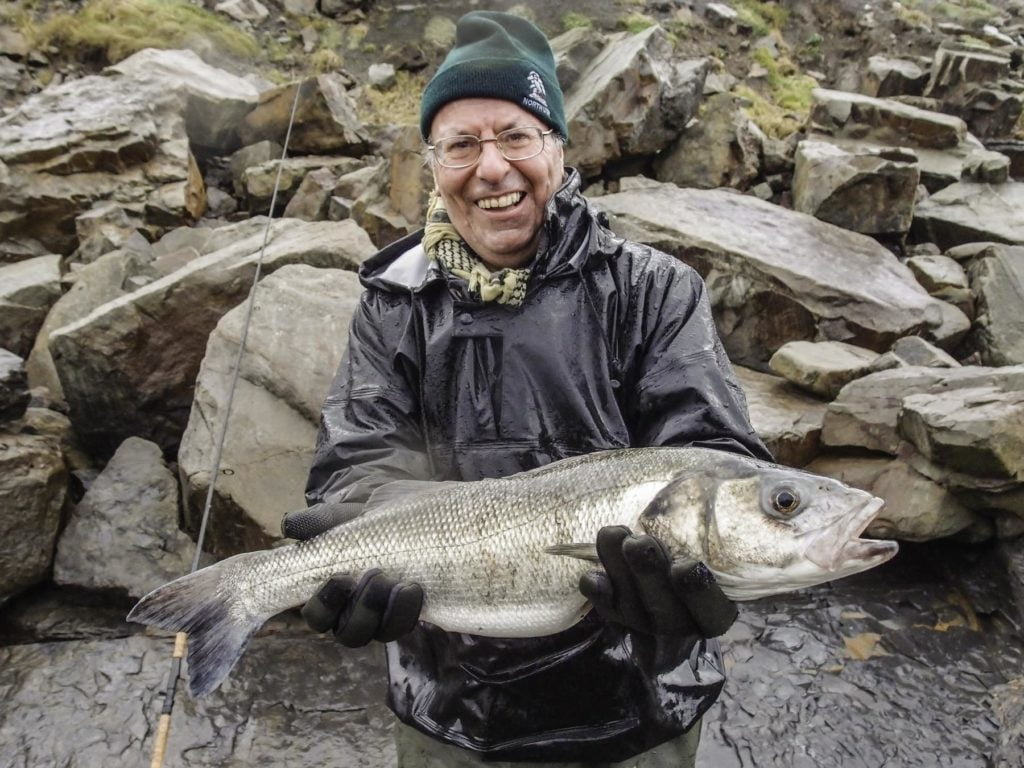
I have given away no secrets. Go and find the marks for yourself. It’s a great way of exploring a world class coastline and you will be enriched by the effort. Remember to ask yourself at the end of the day not how many, how big or did I catch any fish but did I have good day out?
The Bass stay around Pembrokeshire virtually all year but late May to December is the main time. A very productive period is October/November, which coincides very well with the end of the Salmon season. Go on give it a go.
Words & Images – Alan Parfitt
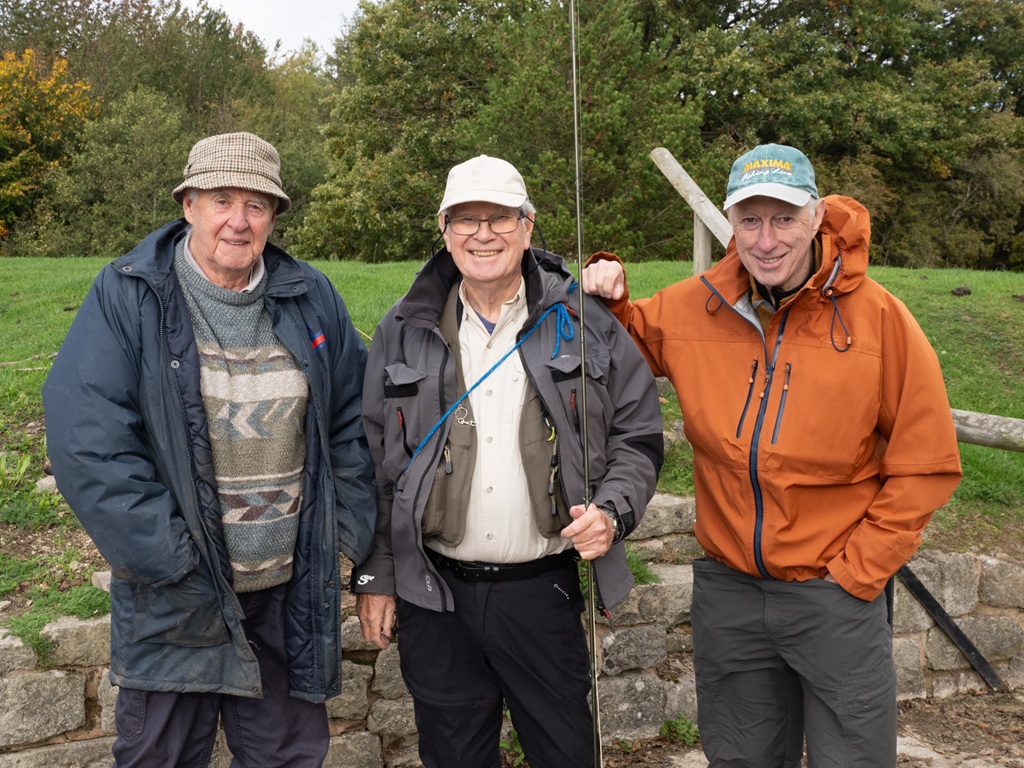
Take a Friend Fishing is Back! Take someone you know fishing for FREE this Christmas and New Year
Calling all Anglers – Take someone you know fishing for FREE between Saturday 20th December 2025 and Sunday 4th of…
Read More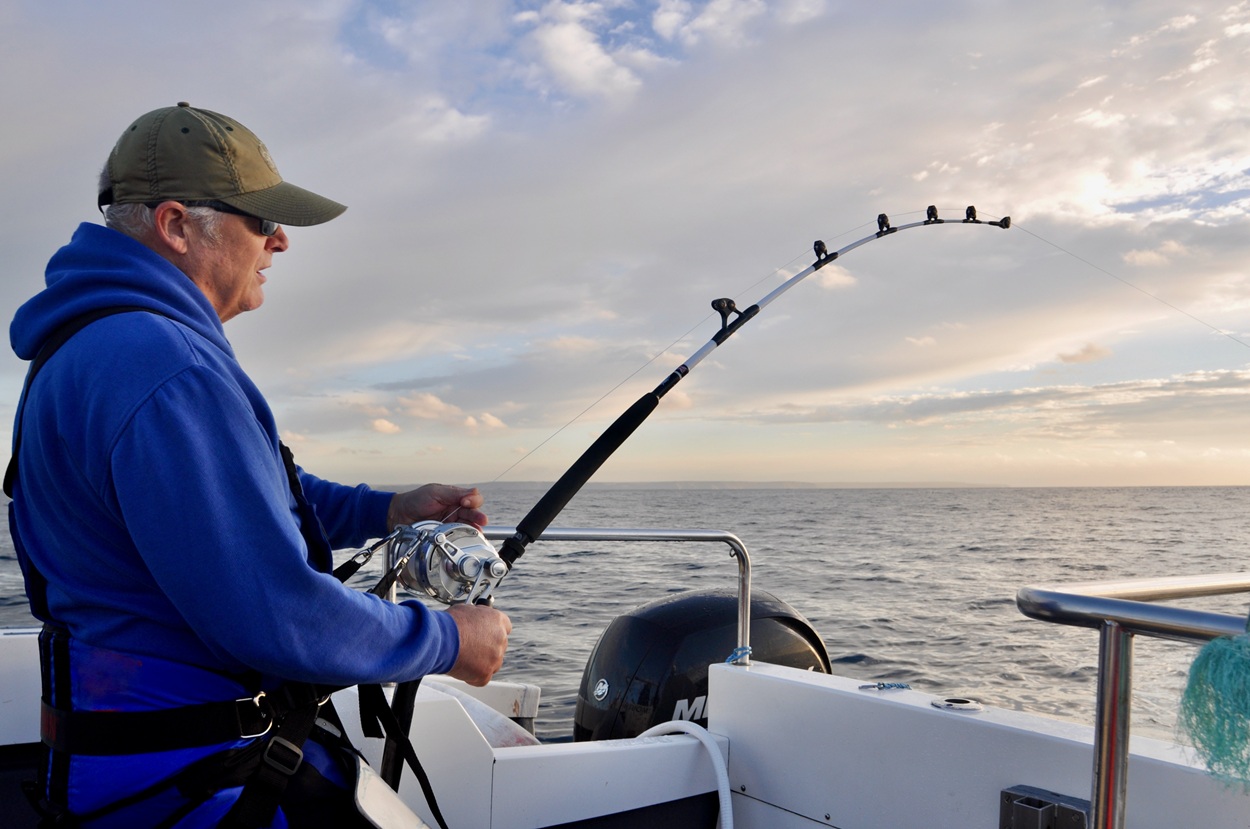
Tuna Sport Fishing Wales
Dave Lewis reports on the emergence of a rod and line tuna fishery off Welsh coasts; a huge draw for…
Read More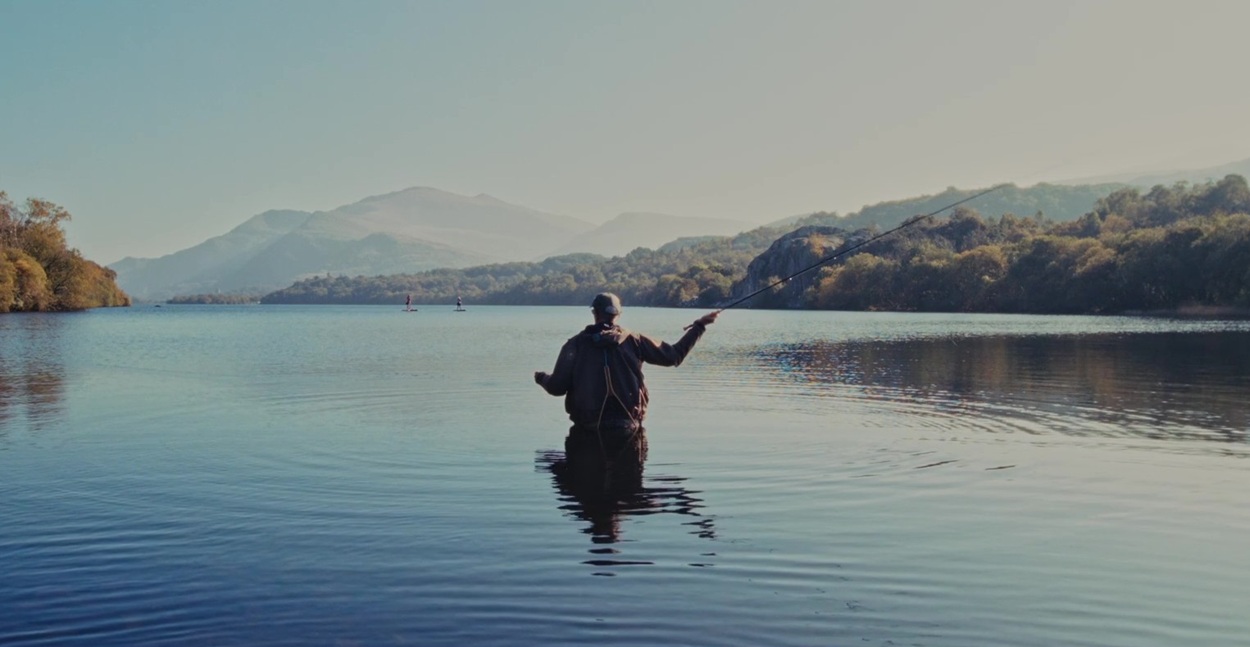
Am ein bywydau 'About our lives' - Cymdeithas Pysgota Seiont Gwyrfai & Llyfni VIDEO
A Welsh language film (Cymraeg) with English subtitles. We’re pleased to present: Am ein bywydau – a film…
Read More
